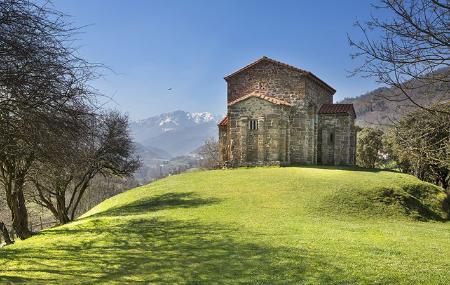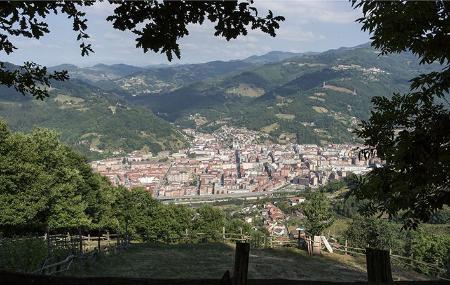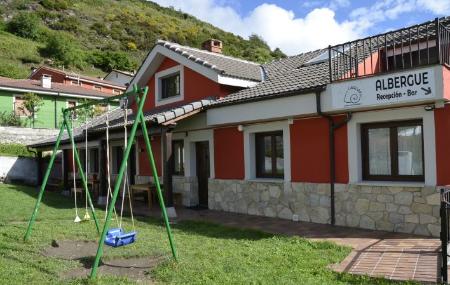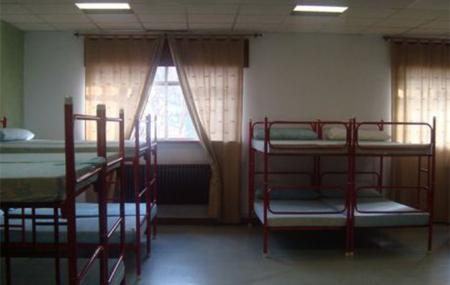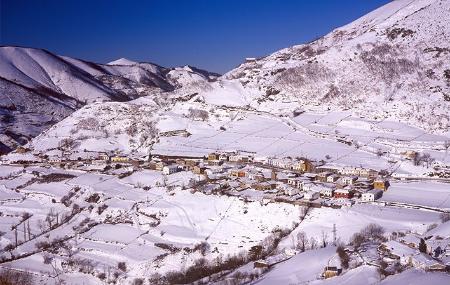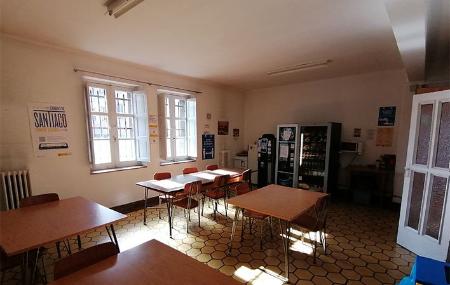The Camino de El Salvador is crucial when it comes to the relationship between Asturias and the Jacobean routes.
/documents/39908/67677/altar-mayor.jpg/15b31a64-3183-a9d5-f583-e8b95e56b039?t=1729499876366

High Altar of the Cathedral of El Salvador (Oviedo/Uviéu).
We must go back to the year 1075, when King Alfonso VI proceeded to open the Holy Ark and the relics that had rested inside it for several centuries came to light.
The value of the discovery, fundamentally due to the symbolic nature of the Holy Shroud, not only reinforced Oviedo/Uviéu's status as a departure point for all those making the pilgrimage to Santiago: it also led to the Asturian capital becoming a centre of pilgrimage on its own merits. In the remote times of the Middle Ages, a popular verse became famous which exemplifies the importance of this route and which is still recited today by many of those who come to Asturias following the tracks that lead to the tomb of the apostle:
He who goes to Santiago and not to the Saviour, visits the servant and forgets the Lord.
The route of the Camino de El Salvador
/documents/39908/67677/mieres.jpg/db8f8806-b270-834b-f2ec-7b20cab689d7?t=1729502112707

Requejo Square (Mieres del Camín).
The Camino de El Salvador starts in León, at the gates of the old pilgrims' hospital of San Marcos. From there, the official route recognises five stages, of which the last three pass through Asturian soil. Needless to say, as with all routes, both stretches can be lengthened or shortened depending on the needs of the walkers and the accommodation available at different points along the route.
This is why there were many pilgrims who, on arriving in León, opted to head towards the Asturian mountains to visit Oviedo/Uviéu and from there continue their journey through the lands of Las Regueras, Grado, Salas, Tineo, Allande and Grandas de Salime; But it is also true that quite a few made the same journey on their return, once they had completed their prayers in Compostela, when on their way back home they passed through the Holy Chamber to prostrate themselves before the "Lord" whom they had bypassed on the outward journey.
/documents/39908/67677/mapa-camino-santiago-salvador.png/aed246c0-105c-0b52-1566-11fd36a61f87?t=1729065318012

The relevance of this itinerary in medieval Asturias is attested to by the traces left by the Jacobean tradition in some place names (perhaps the most important is that of the town of Mieres del Camín, which is still called "del Camino") and by the existence of remains that speak of pilgrims' hospitals or old temples built to provide spiritual cover for walkers arriving in the region from the other side of the mountains.
The Camino de El Salvador thus emerged as a detour from the French Way that allowed those who took it to connect with the Primitive Way if they so wished, but it also offered a meaningful end to the route in its own right.
Itinerary and stages of the Way of El Salvador
Ready to walk the Way of El Salvador? Find here the complete itinerary and the description of each stage so you can prepare your trip from León to Oviedo and live a unique experience!
Search for hostels on the El Salvador Way
Plan your pilgrimage without worries and ensure your rest. Find hostels in each stage of the Way of El Salvador easily and quickly.
 El Salvador Way
Stage 2: Campumanes - Mieres del Camín
El Salvador Way
Stage 2: Campumanes - Mieres del Camín
Albergue de Peregrinos de Mieres del Camín
Mieres del Camín (Mieres)Steps in the mountains
The route from León to Oviedo/Uviéu is essentially a mountain route. Although the biggest obstacle, in the ascending direction, is on the León side, the Asturian part of the route is not to be underestimated in terms of orography.
Although the hardest part, the ascent to the Payares pass, is behind us, the climbs to Chanos, El Padrún or Picullanza and La Manxoya - from where it is said that the old pilgrims used to exclaim "My God!" when they saw the cathedral tower on the horizon - require a good state of fitness. In exchange, the route offers some majestically beautiful landscapes, especially as you descend from Payares, and offers a unique route through the mining basin that follows the course of the rivers Lena and Caudal and leaves the occasional trace of industrial archaeology in view.
/documents/39908/67677/manxoya.jpg/f39aa256-05ee-f5f4-d450-0e1827e5835f?t=1729506758368

Views of the Sierra del Aramo from La Manxoya (Oviedo).
Remnants of the past
/documents/39908/67677/santa-cristina-lena.jpg/ab811098-fa06-6210-5ee9-d1498688cee5?t=1729507538551

Church of Santa Cristina de Lena (Lena).
Below the old Payares railway station, suspended in the mist in an almost implausible landscape, a route begins on which not many medieval traces remain. The first, however, is of great importance.
The church of Santa Cristina de Lena, built during the time of the Asturian Monarchy and belonging to the Ramirense period, is one of the most paradigmatic pre-Romanesque buildings in Asturias.
This is due to the elegance of its forms and, above all, to the superb iconostasis that characterises it and makes it an essential visit. On the stretch from La Pola - where the poet Vital Aza was born - to Mieres del Camín, the church of Santa Eulalia de Uxo, which conserves a Romanesque doorway and apse, is well worth a visit.
/documents/39908/67677/camara-santa.jpg/5bef8580-2879-8e36-58e0-3d6882271865?t=1729508187781

Cámara Santa de la Catedral de El Salvador (Oviedo/Uviéu).
The Way enters Mieres del Camín via the emblematic bridge of La Perra and leaves it via the no less popular square of Requejo. A few kilometres away, in La Rebollá, there used to be an inn and the parish church still conserves a few Romanesque corbels. At the foot of the village, and as a curiosity, there is a small Protestant cemetery where the remains of Numa Guilhou, founder of the Fábrica de Mieres, lie.
The Baroque fountain of Los Llocos is another place worth a stop before reaching Olloniego/Lluniego, a town that inevitably attracts attention with its Romanesque bridge and the ensemble formed by the keep and castle, also built in medieval times. The Way ends at Oviedo/Uviéu Cathedral, whose Holy Chamber marks the definitive end of the journey.


